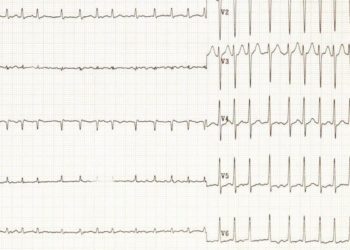Temporal patterns of emergency department visits for firearm injury
1. In this cross-sectional study, emergency department visits for firearm injury were found to be highest between 2:30 and 3:00 am and on Fridays, Saturdays, and Sundays.
2. During the year, visit rates were disproportionally high on Independence Day, New Year’s Eve, and Christmas.
Evidence Rating Level: 3 (Average)
Study Rundown: Firearm injuries remain a major public health issue in the United States, but the lack of temporal data can make resource allocation and response efforts challenging to coordinate. This study aimed to examine emergency department (ED) visits using large-scale surveillance data to determine trends regarding the times of day, days of the week, and days of the year visits for firearm injuries most often take place. An analysis of nearly one hundred thousand firearm-related ED visits showed that visit rates were highest in the hours following midnight and lowest in the hours before noon. The daily mean rates were highest on Friday, Saturday, and Sunday. In terms of year-wide trends, daily rates were highest on July 4 and December 31 and lowest on March 1; monthly rates were highest in July and lowest in February. Weekends before holidays, such as the Memorial Day and Labor Day weekends, also saw disproportionately high daily mean rates. The generalizability of this study is limited by its geographically restricted sample, differences in defining and reporting firearm injuries between facilities, and the potential dissociation between time of injury and presentation to the ED. Nevertheless, this study revealed potential patterns in the timing of firearm injuries.
Click to read this study in AIM
Relevant Reading: Characterizing Gun Violence by Time, Day of the Week, Holidays, and Month in 6 US Cities, 2015-2021
In-Depth [cross-sectional study]: This study aimed to determine temporal trends in ED visits for firearm injury. Surveillance data were obtained through the Centers for Disease Control and Prevention’s (CDC) Firearm Injury Surveillance Through Emergency Rooms (FASTER) program. Firearm injuries included unintentional or intentional self-harm, assault, legal intervention, terrorism, and undetermined intent. Out of 125,862,881 ED visits between January 1, 2018, and August 31, 2023, 93,022 visits for firearm injury were identified, yielding an overall rate of 73.9 per 100,000 ED visits (95% CI, 73.9 to 73.9). The highest firearm injury ED visit rates were found between 2:30 and 3:00 a.m. (224.7 per 100,000 ED visits [95% CI, 223.9 to 225.5]), while the lowest were found between 10:00 and 10:30 a.m. (31.3 per 100,000 [95% CI, 31.3 to 31.4]). Daily mean visit rates were highest on Friday (83.8 per 100,000 ED visits [95% CI, 82.4 to 85.1]), Saturday (103.0 per 100,000 [95% CI, 101.5 to 104.6]), and Sunday (81.4 per 100,000 [95% CI, 80.0 to 82.7]). Daily visit rates were highest on July 4 (158.7 per 100,000 ED visits [95% CI, 145.7 to 172.8]) and December 31 (141.1 per 100,000 [95% CI, 128.5 to 154.9]), and were lowest on March 1 (50.8 per 100,000 [95% CI, 44.0 to 58.6]). Holidays that saw visit rates significantly above the nonholiday mean rate (73.0 per 100,000 ED visits [95% CI, 72.5 to 73.5]) included Independence Day (158.7 per 100,000 [95% CI, 145.7 to 172.8]), New Year’s Eve (141.1 per 100,000 [95% CI, 128.5 to 154.9]), Christmas (112.8 per 100,000 [95% CI, 100.8 to 126.2]), Memorial Day weekend (106.7 per 100,000 [95% CI, 99.3 to 114.6]), Halloween (105.2 per 100,000 [95% CI, 94.0 to 117.8]), and Labor Day weekend (105.0 per 100,000 [95% CI, 96.9 to 113.6]). Overall, this study suggested that ED visits for firearm injuries were more likely to occur at night and in the early morning as well as on holidays.
Image: PD
©2025 2 Minute Medicine, Inc. All rights reserved. No works may be reproduced without expressed written consent from 2 Minute Medicine, Inc. Inquire about licensing here. No article should be construed as medical advice and is not intended as such by the authors or by 2 Minute Medicine, Inc.







